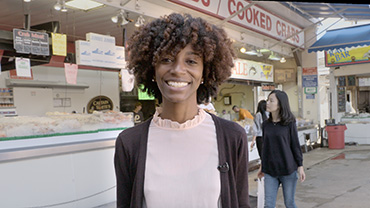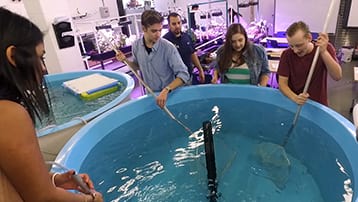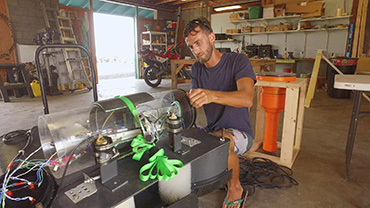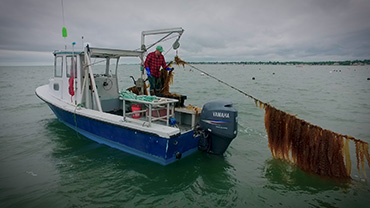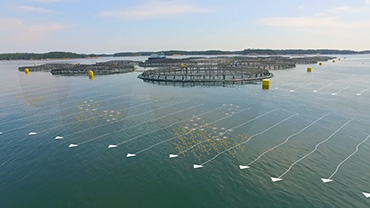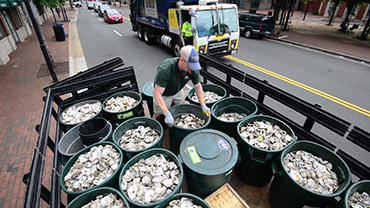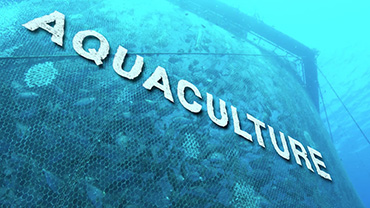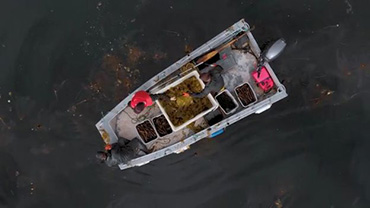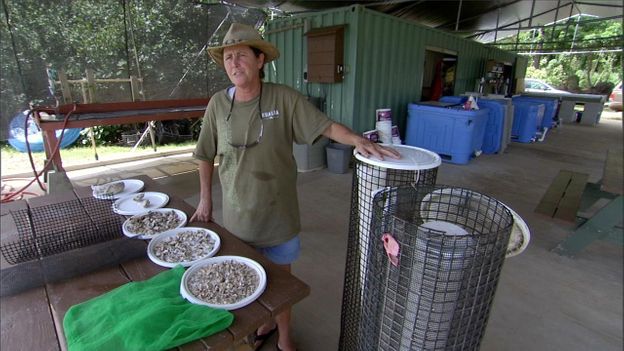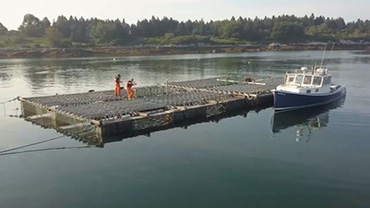Transcript
NARRATOR:
Our ocean covers over seventy percent of the Earth’s surface, but currently it accounts for only two percent of human food. With limited land and freshwater available for farming, people are looking to other sustainable solutions to feed a growing world population.
What if we could farm the open ocean - the home of ferocious storms and giant waves? To do that, it would take some serious high tech.
This robot, which crawls along the netting of a fish pen to clean it, looks a bit like a space rover. So it shouldn’t be surprising that Forever Oceans, a start-up company based out of Kona, Hawai’i, has a background in space tech.
Outer space is a terribly unforgiving environment. You've gotta survive phenomenally tough conditions. But really it's not that different from what we do in the oceans: that you're in salt water; you're in a very destructive environment. We've gotta build everything to survive the worst conditions.
We just completed a number of simulations and the results look really good. As the wave comes through, we can zoom in here, and we can see there’s a bit of a stress concentration that happens right in the front of the cage.
We use a comprehensive modeling and simulation tool to test and verify all the components that go into a Forever Oceans cage. This is similar to what you would see with a jet fighter or space shuttle.
This is real world storm conditions so what you are looking at here is similar to hurricane Niki that Hawai’i saw a number of years ago here. Rolled directly over a wave buoy. We incorporate that data into the models.
The tool not only allows us to verify our current designs, but allows us to quickly develop new open ocean cage technologies for storms of the future.
This simulation shows a Forever Oceans fish cage placed in deep off shore water. These cages can hold seven hundred tons of fish like these Amberjack.
These high tech fish pens can be submerged under the water during big storms to avoid destructive waves.
Shorelines can be a very popular place so siting offshore helps these farms avoid shipping lanes and crowded areas. Since they are so far offshore, systems can be fully automated and controllable on land.
Inside the container behind me you see one of our command-and-control units. It's essentially an entire data center inside. It controls every aspect of the husbandry from the feeding to the cleaning to the removal of fish.
We’re good.Turning on water now.
Water is on (engine whirring).
Looks good. Perfect.
It's transformative when we talk about being able to take out your cell phone and control robots that're twenty miles off shore in the middle of the ocean. That's what this system gives us the power to do, and that changes how we can conduct aquaculture.
The robotics and manipulators, the high-end sensors, all those equip us to operate in a better location in nature, in deeper waters, and operate in a manner that allows conservationists like myself as well as the general public to sleep well at night knowing we are being fed by the ocean in a sustainable manner. That allows conservationists like myself, as well as the general public, to sleep well at night knowing we're being fed by the ocean in a sustainable manner.
In fact the U.S. exclusive economic zone, spans thirteen thousand miles of coastline but contains three point four million square nautical miles of ocean—larger than the combined land area of all fifty states. So there is indeed plenty of open ocean available for remote controlled fish farms to grow food while also keeping our ocean healthy and clean.
 An official website of the United States government.
Here's how you know we're official.
An official website of the United States government.
Here's how you know we're official.

